The compact SUV segment has become increasingly competitive, and two models that stand out are the Toyota RAV4 and the Volvo XC60. Both vehicles offer a blend of functionality, technology, and comfort, but they do so with distinct approaches. Let's dive deeper into a detailed comparison of these two popular SUVs, examining their technical aspects and innovations, to help you decide which one suits your needs better.
Toyota RAV4 vs Volvo XC60 – Which one offers the better deal?
Everyday use, family trips or long-distance drives – here’s where the differences show.
Discover whether Toyota RAV4 or Volvo XC60 fits your lifestyle better.
Performance and Powertrains
The Toyota RAV4 comes equipped with a choice of powertrains, including a Full Hybrid and a Plug-in Hybrid variant. The hybrid system produces a combined power output of up to 218 HP, while the plug-in variant offers a bit more with a total output of 306 HP. Both versions feature a smooth CVT automatic transmission, available in either Front-Wheel Drive or All-Wheel Drive configurations.
In contrast, the Volvo XC60 provides an array of petrol Mild Hybrid and Plug-in Hybrid options, with power outputs ranging from 250 HP to a robust 455 HP. The XC60 is primarily an All-Wheel Drive vehicle that utilizes an automatic gearbox, ensuring a dynamic driving experience across various terrains.
Efficiency on the Road
When it comes to fuel efficiency, the RAV4 excels with a consumption rate of just 5.6 L/100km for the hybrid models, while the plug-in hybrid can produce an impressive electric-only range of up to 75 km. This makes the RAV4 an excellent choice for environmentally conscious drivers.
The XC60, although slightly less efficient in terms of fuel consumption at 7.7 L/100km for the petrol models, does compensate with its electric range of 80 km for the Plug-in Hybrid variants. This means both vehicles offer ample opportunity for electric driving, but the RAV4 edges ahead in overall efficiency.
Acceleration and Speed
Regarding acceleration, the RAV4 performs admirably with 0-100 km/h times ranging from 6 to 8.4 seconds, depending on the variant selected. It has a respectable top speed of 180 km/h.
The Volvo XC60 offers a superior performance in this department, boasting 0-100 km/h times as low as 4.9 seconds for the high-performance variants. With the same top speed of 180 km/h, the XC60 appeals to those seeking a more exhilarating driving experience.
Interior Comfort and Cargo Space
Interior comfort is a strong suit for both models, offering spacious cabins with seating for five. The RAV4 has a trunk capacity of 580 liters, making it a family-friendly option ideal for carrying luggage and gear.
The XC60, while slightly less spacious at 483 liters, provides a premium interior environment with high-quality materials and design. Although it may have a smaller trunk space, the overall comfort and luxury feel are hard to match.
Safety and Technology Innovations
Both SUVs come equipped with advanced safety features and driver assistance technologies. The Toyota RAV4 is known for its Toyota Safety Sense suite, which includes adaptive cruise control, lane-keeping assist, and a pre-collision system.
On the other hand, the Volvo XC60 features the renowned IntelliSafe technology, which emphasizes active safety features such as blind-spot monitoring and autonomous emergency braking. The XC60 also offers advanced infotainment options, with a user-friendly interface that seamlessly integrates with various devices.
Conclusion: Which SUV Reigns Supreme?
In conclusion, selecting between the Toyota RAV4 and the Volvo XC60 ultimately depends on personal preferences and priorities. The RAV4 stands out for its efficiency, practical cargo space, and reliability, making it an excellent choice for families and eco-conscious consumers. Meanwhile, the XC60 thrives in power, luxury, and overall driving dynamics, attracting those who prioritize comfort and performance.
Both SUVs offer unique strengths; therefore, prospective buyers should carefully weigh their needs against what each model has to offer. Whatever your choice, both the RAV4 and XC60 promise a blend of style, technology, and innovation that is hard to beat in today's competitive automotive landscape.
Here’s where it gets real: The technical differences in detail
Costs and Efficiency:
Price and efficiency are often the first things buyers look at. Here it becomes clear which model has the long-term edge – whether at the pump, the plug, or in purchase price.
Toyota RAV4 has a clearly advantage in terms of price – it starts at 35100 £, while the Volvo XC60 costs 49200 £. That’s a price difference of around 14057 £.
Fuel consumption also shows a difference: Toyota RAV4 manages with 1 L and is therefore decisively more efficient than the Volvo XC60 with 2.80 L. The difference is about 1.80 L per 100 km.
As for range, the Volvo XC60 performs barely noticeable better – achieving up to 82 km, about 7 km more than the Toyota RAV4.
Engine and Performance:
Power, torque and acceleration are the classic benchmarks for car enthusiasts – and here, some clear differences start to show.
When it comes to engine power, the Volvo XC60 has a noticeable edge – offering 455 HP compared to 306 HP. That’s roughly 149 HP more horsepower.
In acceleration from 0 to 100 km/h, the Volvo XC60 is evident quicker – completing the sprint in 4.90 s, while the Toyota RAV4 takes 6 s. That’s about 1.10 s faster.
There’s no difference in top speed – both reach 180 km/h.
Space and Everyday Use:
Cabin size, boot volume and payload all play a role in everyday practicality. Here, comfort and flexibility make the difference.
Both vehicles offer seating for 5 people.
In curb weight, Toyota RAV4 is minimal lighter – 1745 kg compared to 1900 kg. The difference is around 155 kg.
In terms of boot space, the Toyota RAV4 offers somewhat more room – 580 L compared to 483 L. That’s a difference of about 97 L.
In maximum load capacity, the Toyota RAV4 performs minimal better – up to 1690 L, which is about 147 L more than the Volvo XC60.
When it comes to payload, Toyota RAV4 slight takes the win – 600 kg compared to 550 kg. That’s a difference of about 50 kg.
Who wins the race?
The Toyota RAV4 proves to be outperforms in nearly all aspects and therefore becomes our DriveDuel Champion!
Toyota RAV4 is the better all-rounder in this comparison.
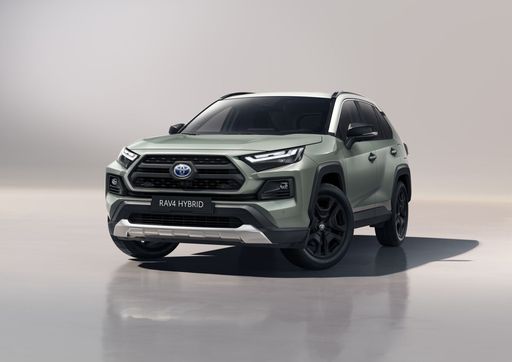 @ Toyota Motor Corporation
@ Toyota Motor Corporation
Toyota RAV4
Toyota RAV4
The Toyota RAV4 feels like a sensible friend on the road, marrying dependable practicality with a dash of SUV personality that keeps daily driving from turning dull. Comfortable and easy to live with, it looks tough without shouting and quietly gets the job done — a sensible pick for buyers who want versatility without drama.
details @ Toyota Motor Corporation
@ Toyota Motor Corporation
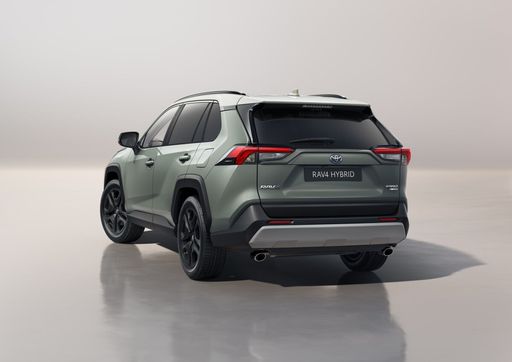 @ Toyota Motor Corporation
@ Toyota Motor Corporation
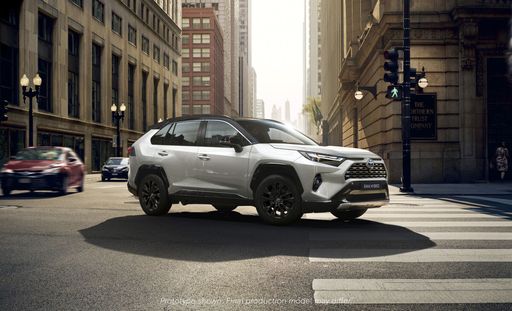 @ Toyota Motor Corporation
@ Toyota Motor Corporation
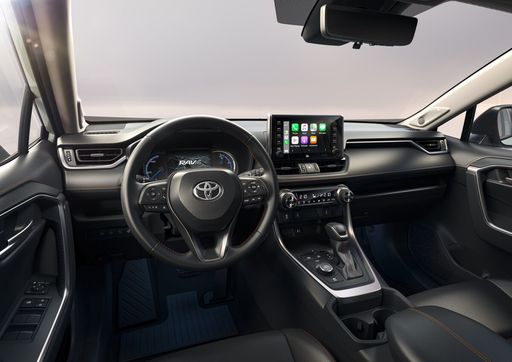 @ Toyota Motor Corporation
@ Toyota Motor Corporation
Volvo XC60
The Volvo XC60 blends Scandinavian calm with confident presence, offering a cabin that feels plush without shouting for attention. It’s a smart pick for buyers after a composed ride, clever practicality and thoughtful safety touches — it even makes running the family shuttle feel almost serene, which is a small miracle.
details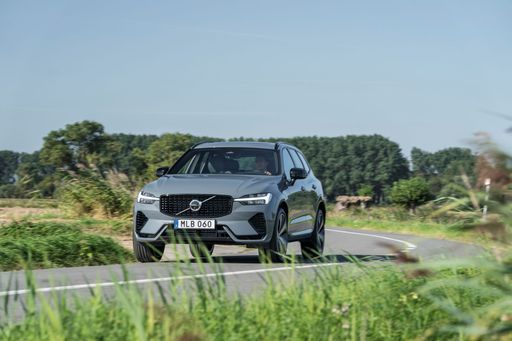 @ Volvo Cars
@ Volvo Cars
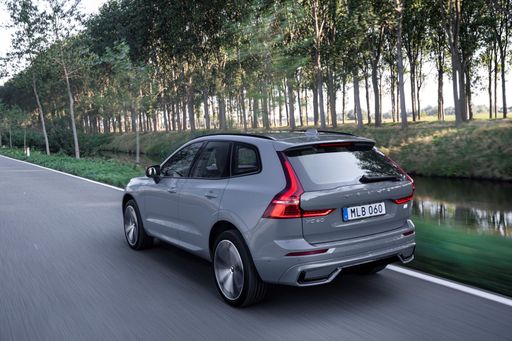 @ Volvo Cars
@ Volvo Cars
 @ Volvo Cars
@ Volvo Cars
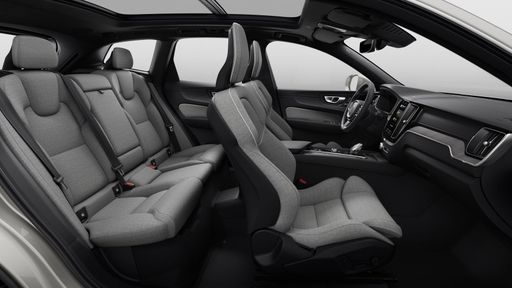 @ Volvo Cars
@ Volvo Cars
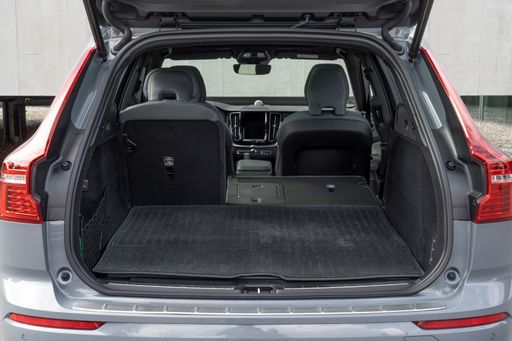 @ Volvo Cars
@ Volvo Cars
 @ Toyota Motor Corporation
@ Toyota Motor Corporation
|
 @ Volvo Cars
@ Volvo Cars
|
|
|
|
Costs and Consumption |
|
|---|---|
|
Price
35100 - 55700 £
|
Price
49200 - 75100 £
|
|
Consumption L/100km
1 - 5.6 L
|
Consumption L/100km
2.8 - 7.5 L
|
|
Consumption kWh/100km
-
|
Consumption kWh/100km
-
|
|
Electric Range
75 km
|
Electric Range
74 - 82 km
|
|
Battery Capacity
-
|
Battery Capacity
14.70 kWh
|
|
co2
22 - 128 g/km
|
co2
64 - 169 g/km
|
|
Fuel tank capacity
55 L
|
Fuel tank capacity
71 L
|
Dimensions and Body |
|
|---|---|
|
Body Type
SUV
|
Body Type
SUV
|
|
Seats
5
|
Seats
5
|
|
Doors
5
|
Doors
5
|
|
Curb weight
1745 - 1910 kg
|
Curb weight
1900 - 2150 kg
|
|
Trunk capacity
520 - 580 L
|
Trunk capacity
468 - 483 L
|
|
Length
4600 mm
|
Length
4708 mm
|
|
Width
1855 mm
|
Width
1902 mm
|
|
Height
1685 mm
|
Height
1651 - 1655 mm
|
|
Max trunk capacity
1604 - 1690 L
|
Max trunk capacity
1528 - 1543 L
|
|
Payload
390 - 600 kg
|
Payload
510 - 550 kg
|
Engine and Performance |
|
|---|---|
|
Engine Type
Full Hybrid, Plugin Hybrid
|
Engine Type
Petrol MHEV, Plugin Hybrid
|
|
Transmission
Automatic
|
Transmission
Automatic
|
|
Transmission Detail
CVT
|
Transmission Detail
Automatic Gearbox
|
|
Drive Type
Front-Wheel Drive, All-Wheel Drive
|
Drive Type
All-Wheel Drive
|
|
Power HP
218 - 306 HP
|
Power HP
250 - 455 HP
|
|
Acceleration 0-100km/h
6 - 8.4 s
|
Acceleration 0-100km/h
4.9 - 6.9 s
|
|
Max Speed
180 km/h
|
Max Speed
180 km/h
|
|
Torque
-
|
Torque
350 - 709 Nm
|
|
Number of Cylinders
4
|
Number of Cylinders
4
|
|
Power kW
160 - 225 kW
|
Power kW
184 - 335 kW
|
|
Engine capacity
2487 cm3
|
Engine capacity
1969 cm3
|
General |
|
|---|---|
|
Model Year
2024 - 2025
|
Model Year
2025
|
|
CO2 Efficiency Class
D, B
|
CO2 Efficiency Class
F, B
|
|
Brand
Toyota
|
Brand
Volvo
|
What drive types are available for the Toyota RAV4?
Available configurations include Front-Wheel Drive or All-Wheel Drive.
The prices and data displayed are estimates based on German list prices and may vary by country. This information is not legally binding.
